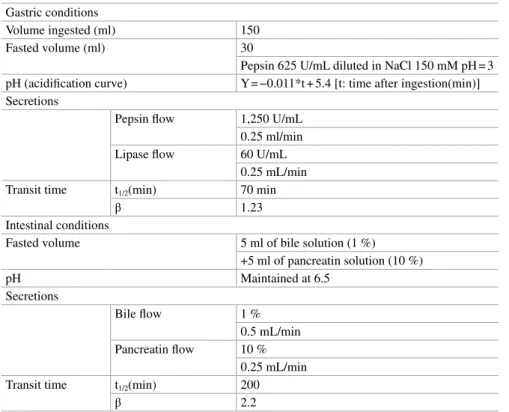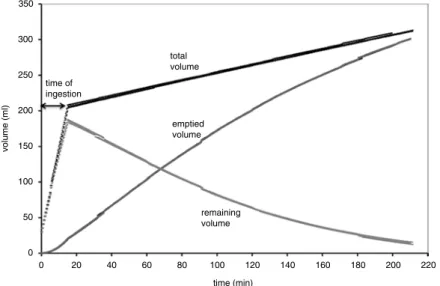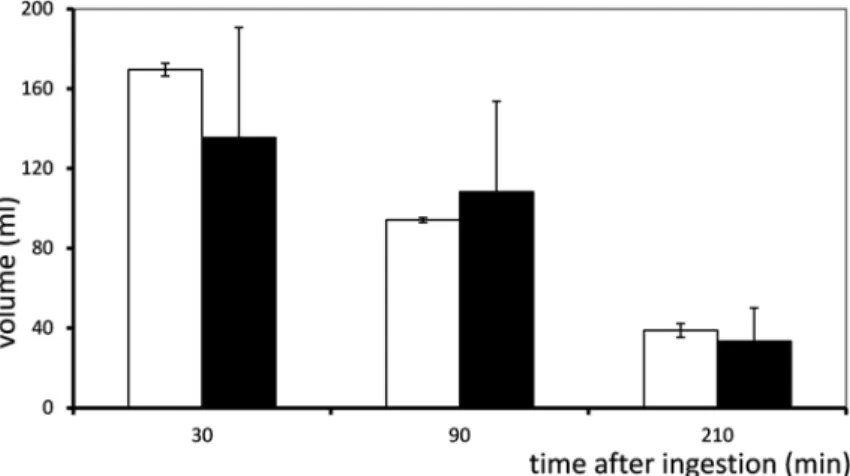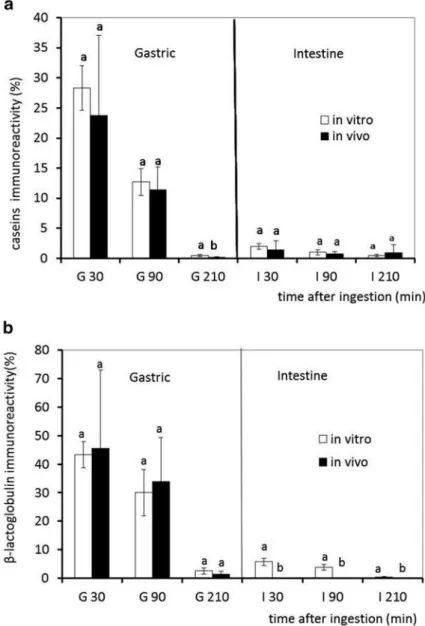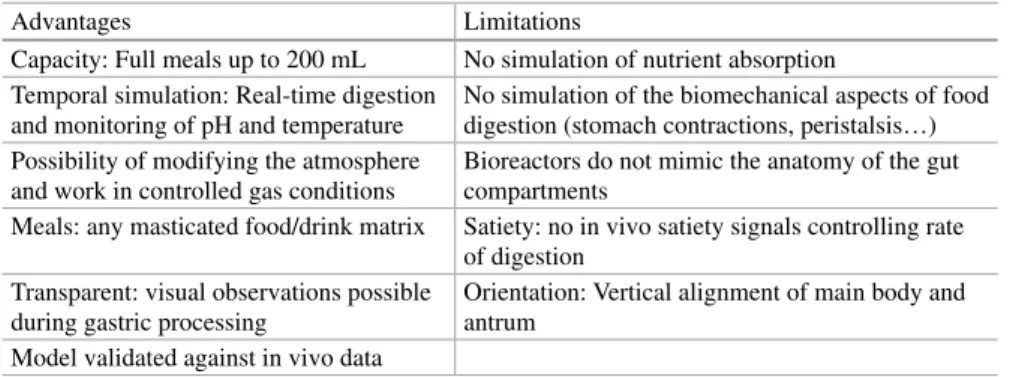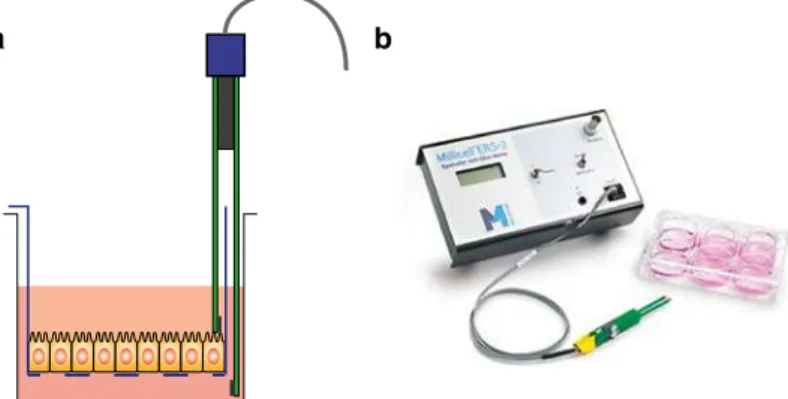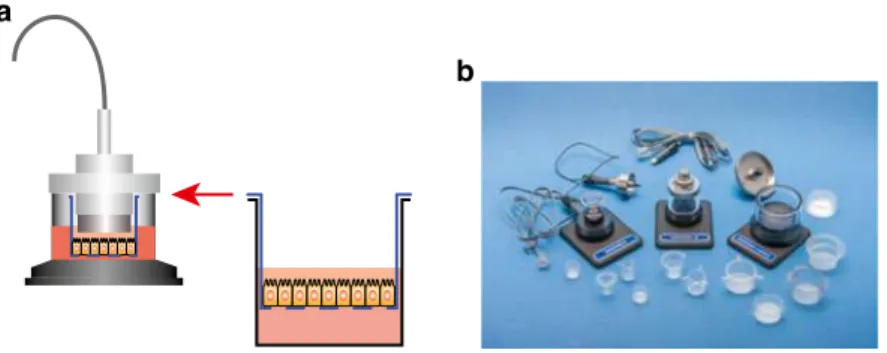This book may be cited as: COST Action FA1005 "The impact of food bioactives on gut health: in vitro and ex vivo models." In the lamina propria (LP) a range of different immune cells can be found, typically DCs, macrophages, plasma cells, memory B and T cells, mast cells, eosinophils and cytotoxic natural killer cells (NK cells) (Macdonald and Monteleone 2005; Peterson Peterson and Artis 2014).
Role of Microbiota
For this reason, in this book we focus on in vitro and ex vivo models, with the requirement that the models must be closely related to human physiology and readily available to the scientific community. We hope this book will be your first port of call in determining which in vitro and ex vivo assays best meet your needs when studying the health effects of food bioactives in the gut.
In conclusion, while in many cases in vivo human or animal data represent the "gold standard" in terms of conducting food and health studies, often for financial, ethical or practical reasons (e.g. high-throughput screens). ) are more suitable in vitro and/or ex vivo models. Wickham M, Faulks R, Mills C (2009) In vitro digestion methods to assess the effect of food structure on allergen degradation.
Gastrointestinal Digestion Models, General Introduction
General Introduction to Cells, Cell Lines and Cell Culture
Contents
Innate and Adaptive Immune Cells: General Introduction
Enteroendocrine Cell Models: General Introduction
General Introduction
Part I
Gastrointestinal Digestion Models, General Introduction
Chapter 1
Static Digestion Models: General Introduction
- Defi nition of Concepts: Bioavailability, Bioaccessibility and Bioactivity
- Static Methods
- Solubility/Dialyzability
- Digestion Conditions
- Applications: Advantages and Disadvantages
- Static Versus In Vivo Digestion: Conclusions
- Chapter 2
Other components such as phospholipids and calcium are also used in various in vitro models (Hur et al. 2011. A recent review assesses the importance of in vitro methods in nutritional, toxicological, pharmaceutical and microbiological studies (Guerra et al. 2012.
InfoGest Consensus Method
- Introduction
- The Oral Phase
- The Gastric Phase
- The Small Intestinal Phase
- Practicalities
- Sampling
- Conclusions
- Chapter 3
The pH in the stomach is quite dynamic and strongly depends on the buffering capacity. This way the base/acid can be added more quickly followed by a final pH check.
Approaches to Static Digestion Models
- Introduction
- Static Models for Protein Hydrolysis
- Static Models for Lipid Hydrolysis
- Other Static Models
- Chapter 4
One of the most cited articles on the use of in vitro digestion is in the field of allergies. However, it should be kept in mind that the activity of the enzyme on the substrate used in the simulation and under the simulation conditions is likely to vary considerably.
Dynamic Digestion Models: General Introduction
- Geometry
- Physical Forces
- Biochemistry
- Chapter 5
Dynamic digestive models generally have a number of different digestive secretions added to the compartments of the model over time. Within the fundus of the stomach, the bolus is only subjected to gentle contractions and is therefore not mixed well.
The TNO Gastro-Intestinal Model (TIM)
- Introduction
- Concept of TIM
- TIM-1
- TinyTIM
- Advanced Gastric Compartment (TIM-agc)
- The Use of TIM to Study the Bio-accessibility of Nutrients
- Protein Quality
- Prediction of Glycemic Response
- Lipids
- Conclusions
- Chapter 6
All functions of the gastric compartment are similar to the gastric compartment of TIM-1. Traditionally, protein quality is evaluated by determining the Protein Efficiency Ratio (PER).
Dynamic Gastric Model (DGM)
- Origins and Design of the DGM
- General Protocol for DGM Experiments
- Uses of the DGM
- Food-Based Research
- Pharmaceutical-Based Research
- Advantages, Disadvantages and Limitations
- Availability of the System
- Chapter 7
Also, a pool of gastric secretions forms on the surface, which mimics the phase separation of the meal inside the stomach. At the start of the program, the meal is added to the fund of the DGM.
Human Gastric Simulator (Riddet Model)
- Origins of the HGS
- Model Description
- Gastric Compartment
- Gastric Motility
- Gastric Emptying
- Gastric Secretions
- Temperature Control
- Analysis of HGS Biomechanical Relevance
- Operating Protocol
- Preparation of a Food Bolus
- Gastric Processing
- Uses of the HGS
- Role of ACW Activity on Food Digestion
- Role of Food Material Properties
- Advantages and Limitations
- Availability of the System
Initially, the amount of solids leaving the HGS was higher in the case of the . Preliminary applications of the HGS have shown the need to better understand and mimic the physical processes underlying digestion.
The DIDGI ® System
- Origins and Design of the DIDGI ® System
- Validation of DIDGI ® for the Digestion of Infant Formula
- Protocol for the In Vitro Dynamic Digestion of Infant Formula Using the DIDGI ® System
- In Vivo Digestion of Infant Formula on Piglets
- Comparison In Vitro/In Vivo Data
- Advantages, Disadvantages and Limitations
- Conclusion and Prospects
To demonstrate that this system was physiologically relevant, we performed an in vitro and in vivo comparison of infant formula digestion. Volumes of gastric contents observed in vitro with a dynamic digestive system were compared with those observed in vivo in piglets (Figure 8.3).
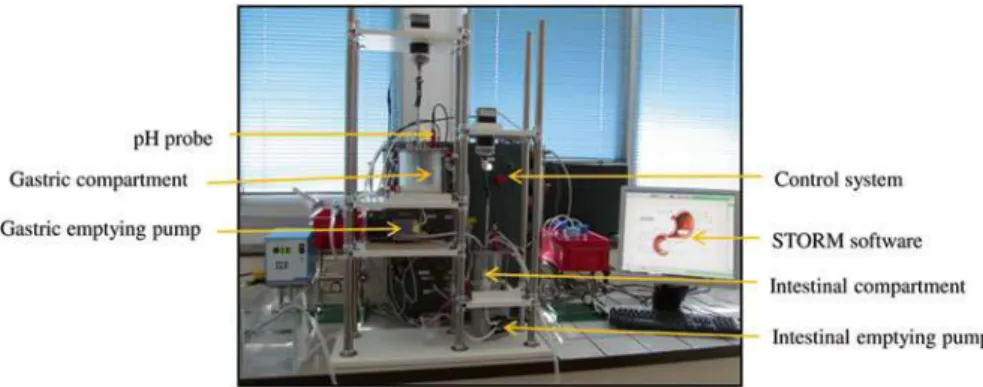
Part II
General Introduction to Cells, Cell Lines and Cell Culture
Introduction
Salt Solutions
Many balanced salt solutions (typically Earle's balanced salt solution (EBSS), Hank's balanced salt solution (HBSS), Dulbecco's phosphate buffered saline (D-PBS) or similar) have been developed to provide optimal short-term support for different cell types in vitro and for different culture conditions.
Culture Media
Medium Quality
Serum Addition
During propagation, culture conditions can be expected to influence and select cells with specific properties. The cells must then be expanded and frozen to create a base cell bank so that new cells can be thawed and transferred into culture to maintain the properties of the original cell line.
The Cell Culture Hood
Thus, for most purposes, we rely on using transformed cell lines that originated from tumors of various tissues. It is absolutely recommended that when a cell line arrives at a laboratory, the passage number is known.
Remember that all equipment contained within the cabinet is potentially contaminated and it is very important to avoid the disturbance of laminar airflow over open media bottles and culture trays with any contaminated material. As a rule, never work with more than one cell line at a time inside the cell culture cover.
General Cell Culture Protocols
Dilute the cells in complete medium and seed them at an appropriate density in the tissue culture tray of choice. Reduced cell viability is most likely due to improper handling of cells either before freezing, during freezing or thawing of the cells.
Contamination of Cell Cultures
Bovine and porcine mycoplasmas are typically derived from infected sera or other animal-derived products used in the cell culture laboratory. Although we tend to think of mycoplasmas primarily as a problem in cell culture work, it should be remembered that the mycoplasma family also includes a number of human pathogens.
Epithelial Cell Models; General Introduction
- Measurement of Transepithelial Electrical Resistance (TEER)
- Basic Protocol
- Calculating Transepithelial Resistance
- Verification of Monolayer Integrity by Lucifer Yellow Flux
- Basic Protocol
- Summary
- Chapter 10
HT29 co-cultures, the main readout parameters are effects on epithelial barrier function, absorption or transepithelial transport of the test compound. The height of the growing medium outside and inside the insert must be at the same level.
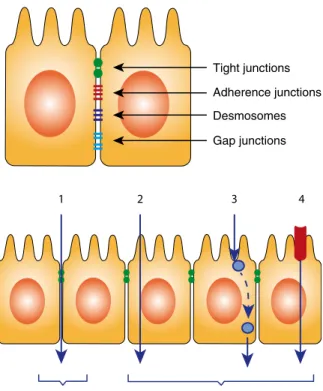
Caco-2 Cell Line
- Origin
- Features and Mechanisms
- Stability, Consistency and Reproducibility
- Relevance to Human In Vivo Situation
- General Protocols for Caco-2 Cells .1 General Maintenance
- Protocol for Polarizing Caco-2 Cells in Tissue Culture Inserts
- Troubleshooting Guide for Transport Experiments Across Caco-2 Monolayers
- Applications
- Advantages and Disadvantages
- Conclusion
- Chapter 11
The differentiation of Caco-2 cells seems to follow a schedule in the expression of morphological and biochemical characteristics of the absorptive enterocytes. In the characterization of the optimal physicochemical properties of a bioactive molecule for passive diffusion via the paracellular or transcellular pathways across the intestinal epithelium (Burton et al. 1996.
HT29 Cell Line
- Origin
- Features and Mechanisms
- Stability, Consistency and Reproducibility
- Relevance to Human In Vivo Situation
- General Protocol for HT29-MTX Cells .1 Cell Maintenance Protocol
- Experimental Protocol for Test Compounds
- Experimental Read Out .1 Functionality Studies
- Transport Studies
- Microorganisms Survival, Adhesion or Invasion
- Conclusions
- Chapter 12
An illustrative example is found in the study of the antiproliferative activity of in vitro gastrointestinal digestion of sea cucumber cattle (Pérez-Vega et al. 2013. Another study focused on the study of the immunomodulatory activity of cereal β-glucan preparations on both HT29 and Caco-2 cells (Rieder et al. 2011.
The IPEC-J2 Cell Line
- Origin
- Special Features/Morphology/Receptors
- Stability/Consistency/Reproducibility of the System
- Relevance to Human In Vivo Situation
- General Protocol .1 Culture Conditions
- Experimental Readout
- Sample Preparation
- Conclusion
- Chapter 13
Thus, mucus production by IPEC-J2 cells is not comparable to the in vivo situation. On the other hand, Caco-2 and T84 cells produce a more pronounced mucus layer compared to IPEC-J2 cells (Navabi et al. 2013.
Co-cultivation of Caco-2 and HT-29MTX
- Origin, Features and Mechanisms
- Stability/Consistency and Reproducibility
- Relevance to the Human In Vivo Situation
- General Protocol
- Assess Viability
- Experimental Readout
- Advantages, Disadvantages and Limitations
- Conclusions
The stability and reproducibility of the co-culture model of Caco-2 and HT-29MTX are very similar to the monocultures. The permeability of the Caco-2/HT-29 co-culture model was correlated with fractions absorbed in humans for selected drugs, and relatively good correlations were found (Walter et al. 1996.
Part III
Innate and Adaptive Immune Cells
General Introduction
Based on the number of publications dealing with the immunomodulatory/anti-inflammatory properties of food-derived compounds with bioactive properties, only monocytes, macrophages, dendritic cells, PBMCs and T cells will be addressed in this section.
Monocytes and Macrophages
Dendritic Cells
In the same chapter, the main DC isolation techniques as well as in vitro/ex vivo culture settings that can be used for in vitro testing of food compounds with bioactive properties are discussed. Special attention will be given to the potential of food-derived bioactive substances in inhibiting DC activation due to the relevance of DCs in the initiation of the inflammatory processes.
Human Peripheral Blood Mononuclear Cells
During migration, the mature dendritic cells express high surface levels of class II major histocompatibility complex (MHC) molecules with bound antigenic peptides as well as costimulatory molecules. By the time DCs reach secondary lymphoid organs, they can present antigens to populations of naive and memory T cells.
T Lymphocytes or T-Cells
Chapter 14
THP-1 and U937 Cells
- Origin and Some Features of THP-1 and U937 Cells
- Stability, Consistency and Reproducibility of the System
- Relevance to Human In Vivo Situation
- Other Models with the Same Applicability
- General Protocol of Culturing THP-1 Cells
- Differentiation of THP-1 and U937 Monocytes into Macrophages
- Differentiation of THP-1 and U937 Monocytes into Dendritic Cells
- Controls to Test Viability and Performance of the Model
- Critical Notes
- Read-Out of the System
- Chapter 15
This cell line has been an important tool in the investigation of the mechanisms involved in monocyte-endothelial adhesion (Liu et al. 2004. Ziegler-Heitbrock HWL et al (1988) Establishment of a human cell line (Mono Mac 6) with characteristics of mature monocytes.
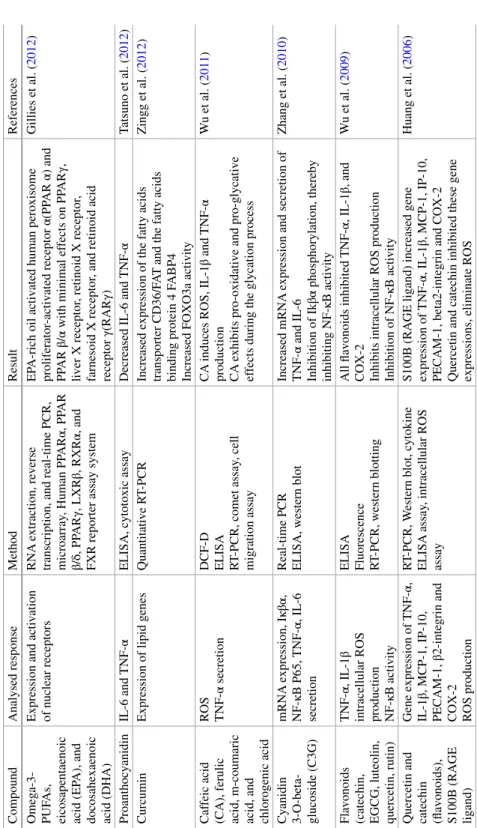
Peripheral Blood Mononuclear Cells
- Origin
- Features and Mechanisms
- Stability, Consistency and Reproducibility
- Relevance to Human In Vivo Situation
- General Protocol
- Study of Proliferative/Cytotoxic Activity
- Study of Infl ammatory Responses
- Assess Viability
- Experimental Read Out
- Advantages, Disadvantages and Limitations of the System
- Conclusions
- Chapter 16
Measurement of effects on proliferative/cytotoxic responses should be done in the presence and absence of mitogenic stimuli. Cytokine profile investigations are most easily performed by ELISA analysis of secreted cytokines in the culture supernatant.
PBMC-Derived T Cells
Introduction and Origin
Their main applications aim to analyze immunological responses against food protein antigens to gain further insight into the mechanisms responsible for the development of oral tolerance or for the triggering of food allergies (Martino et al. 2012.
Features and Mechanisms
CD28-dependent costimulation of activated T cells leads to IL-2 production by the activated T cells themselves. Originally, two main types of effector CD4 + T cells, called T-helper cells 1 (Th1) and 2 (Th2 ).
Another alternative is cell cultures from tissues of animal models of food allergy (spleen, lymph nodes, Peyer's patches) (López-Expósito et al. 2011. Although T cell lines exceed the frequency limit, prior in vitro expansion may alter cell phenotypes or bias the results with the selection of rapidly propagated clones (Pascal et al. 2013.
General Protocol
- T Cell Isolation Protocols
- Indirect Positive Isolation of Human CD4 + T
- Preparation of Cells and Antibodies
- Coating of PBMCs with CD4 Antibody
- Magnetic Beads Washing Procedure
- Separation of T Cells
- Detachment of T Cells from Beads
It is important not to disturb the beads clinging to one side of the tube. It is important not to disturb the beads clinging to the side of the tube.
Assess Viability
Then the tube is placed on the magnet for another 2 minutes and the uncollected cells are aspirated, as in the previous step. Finally, 2.5 ml of supernatant is carefully removed and the tube is gently tapped to resuspend the T-cell coated bead suspension.
Samples
T cell culture assays are usually performed in sample (three different wells) and biological triplicates (three different plates) (Prickett et al. 2011. An incubation period of 72 hours is also used when proliferative responses to food proteins (such as OVA or peanut extracts) are studied (Prickett et al.
Experimental Readouts
Prickett SR, Voskamp AL, Dacumos-Hill A, Symons K, Rolland JM, O'Hehir RE (2011) Ara h 2 peptides containing dominant CD4+ T cell epitopes: candidates for a peanut allergy therapy. Prickett SR, Voskamp AL, Phan T, Dacumos-Hill A, Mannering SI, Rolland JM, O'Hehir RE (2013) Ara h 1 CD4+ T cell epitope-based peptides: candidates for a peanut allergy therapeutic.
Chapter 17
- Origin
- Features and Mechanisms
- DC Subsets
- General Protocols
- DC Cell Lines
- Isolating Primary DCs from Blood
- CD34 + -Derived DCs
- Monocyte-Derived DCs
- Asses Viability
- Experimental Readout
- Co-stimulation
- Cytokine Production
- Other DC Readouts
Culturing of peripheral blood-derived CD1c (BDCA1) DC for 2 days with GM-CSF, vitamin D and Retinoic Acid (RA) induced high expression of RALDH as well as the ability to induce enteric homing receptors resembling CD103 + Gut-resident Sirpα + (DP) DCs to some extent (Sato et al. 2013. After the 6/7-day culture period, immature DCs can be used for testing the immune-modifying effects of food bioactives.
